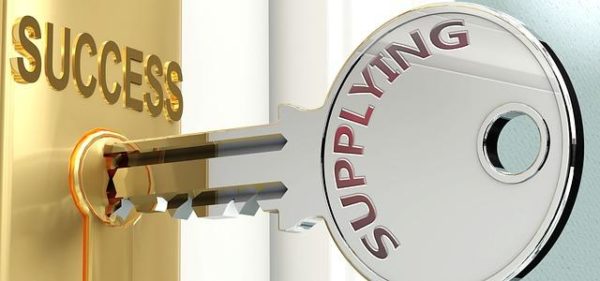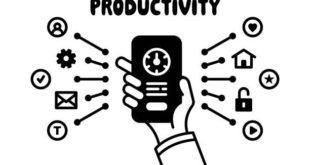
With the advent of the Internet of Things in the supply chain ecosystem, the control tower has become an invaluable tool for delivering updates on the location and conditions of in-transit cargo in real time. A control tower makes supply chain networks more client-focused, feasible, responsive, and agile. Regrettably, there’s a lot of confusion regarding control tower logistics and what it offers to organizations. Even if companies are turning to control towers to enhance visibility, they fall short of delivering value, which doesn’t come as a surprise. Here we’ll take an in-depth look at the subject.
Supply Chain Control Tower Definition & Meaning
According to Gartner, it’s not helpful to look at it from a technology perspective. As a matter of fact, leaders would be wise to take into account control tower logistics’ underlying capabilities. A control tower is a cloud-based solution that provides enhanced visibility and improves decision-making across the supply chain, deploying advanced technologies like machine learning or artificial intelligence. It’s basically a connected, bespoke dashboard that ensures an easy-to-read view of events. Organizations can grasp, prioritize, and solve pressing matters as events happen. The control tower seizes and leverages real-time operational data from across the business ecosystem – it’s not a standalone application but an integrated capability in a broader suite or tool.
Organizations are under considerable pressure to offer customers what they need (not what they want) while also maximizing supply chain efficiency and achieving cost-saving goals. Control tower logistics allows leaders to address what they can’t see, plan for unlimited variations, and solve disruptions and risks before they become problems. Some of the key capabilities of a control tower include but aren’t limited to:
- Real-Time, End-To-End Visibility. You have live information that allows you to monitor the route of goods and their exact location. In other words, you can see what’s happening at any given point, from suppliers to customers. The control tower compared data across siloed systems to external event information to offer observations or findings that can positively impact a business.
- Predictive And Prescriptive Decision Support. You can harness the power of advanced analytics and artificial intelligence to foresee future scenarios and understand the impact of events on customers. You can edge out your competition by appreciating past events in a much better fashion.
- Collaborative Information Sharing. You can effectively communicate with internal and external stakeholders, therefore, managing expectations across the entire supply chain. The shared information is in a form that’s meaningful to parties that can respond to unplanned events.
A control tower brings together people, processes, technology, and data. The benefits discussed above help organizations save time and money, leading to a better return on the investment. Help your team develop new digital and analytical skills to work effectively alongside embedded technology.
How To Use a Supply Chain Control Tower
The future of supply chain management depends on automated, real-time insights that are easy to digest so leaders can make better decisions. In what follows, we’ll explain the main deployment options:
- Buy. You may wish to purchase a control tower rather than make one on your own. The decision depends entirely on your business strategy, not to mention the risks and economic factors. Engage with a supply chain solutions provider capable of providing IT integration. The cloud-based solution will be implemented on your premises. Outsourcing is a commonly followed model, offering an end-to-end supply chain visibility platform.
- Build. If you go down this route, you must create a serverless data lake and apply business intelligence. Unfortunately, achieving this objective is challenging. You may be forced to make decisions that affect the profitability of the business because you’re not prepared. The good news is that you can outsource a control tower to a 4PL that fits your objectives and requirements.
Supply Chain Control Tower: Then & Now
The idea of supply chain control towers first emerged in the 1990s when managers needed visibility to handle shipments, operations, and overhead costs. In the early days, control towers were siloed and linear, meaning that they offered insights into specific areas of operation (e.g., transportation, warehousing). Equally, they offered visibility to immediate trading partners. As the speed and complexity of supply chains advanced, it became apparent that it was difficult to organize and solve problems across legacy systems. Despite their best efforts, supply chain managers couldn’t do anything but implement short-term improvements to operational efficiency. All that has changed.
Modern control towers take advantage of the cloud, among other technologies, to offer deeper visibility across the supply chain. The current generation of control towers is built on the strength of their predecessors, so they’re adept at helping you manage complex operations. As they continue to transform the supply chain, control towers are in high demand. Built on a flexible architecture, the supply chain solution can evolve over time with the business, so it’s easy to scale to new entities and use cases. Keep in mind that perfect data doesn’t exist, so create a strategy that identifies quality information and serves the overall goals of the organization.
Wrapping It Up
A top-notch supply chain control tower helps streamline operations or supply chain management while enhancing resilience and overall agility. There are several types of supply chain control towers, such as fulfillment control towers, logistics/transport control towers, supply assurance control towers, inventory control towers, and, last but not least, E2E supply chain control towers. The control tower combines data with logic to provide up-to-the-minute information that offers an accurate and deep understanding of core operational functions. Stakeholders are able to create procedure playbooks that can be shared with supply chain teams when a problem is identified.
All over the world, supply chains abound in geopolitical complexity, regulatory challenges, and operational risk. Not only is it necessary to take a dynamic approach when it comes to event management but to also ensure an agile network that’s susceptible to changing constraints. There’s a control tower to meet your needs, regardless of where you are on your digital journey. Right now, control tower logistics is a must-have capability.
 Gearfuse Technology, Science, Culture & More
Gearfuse Technology, Science, Culture & More


